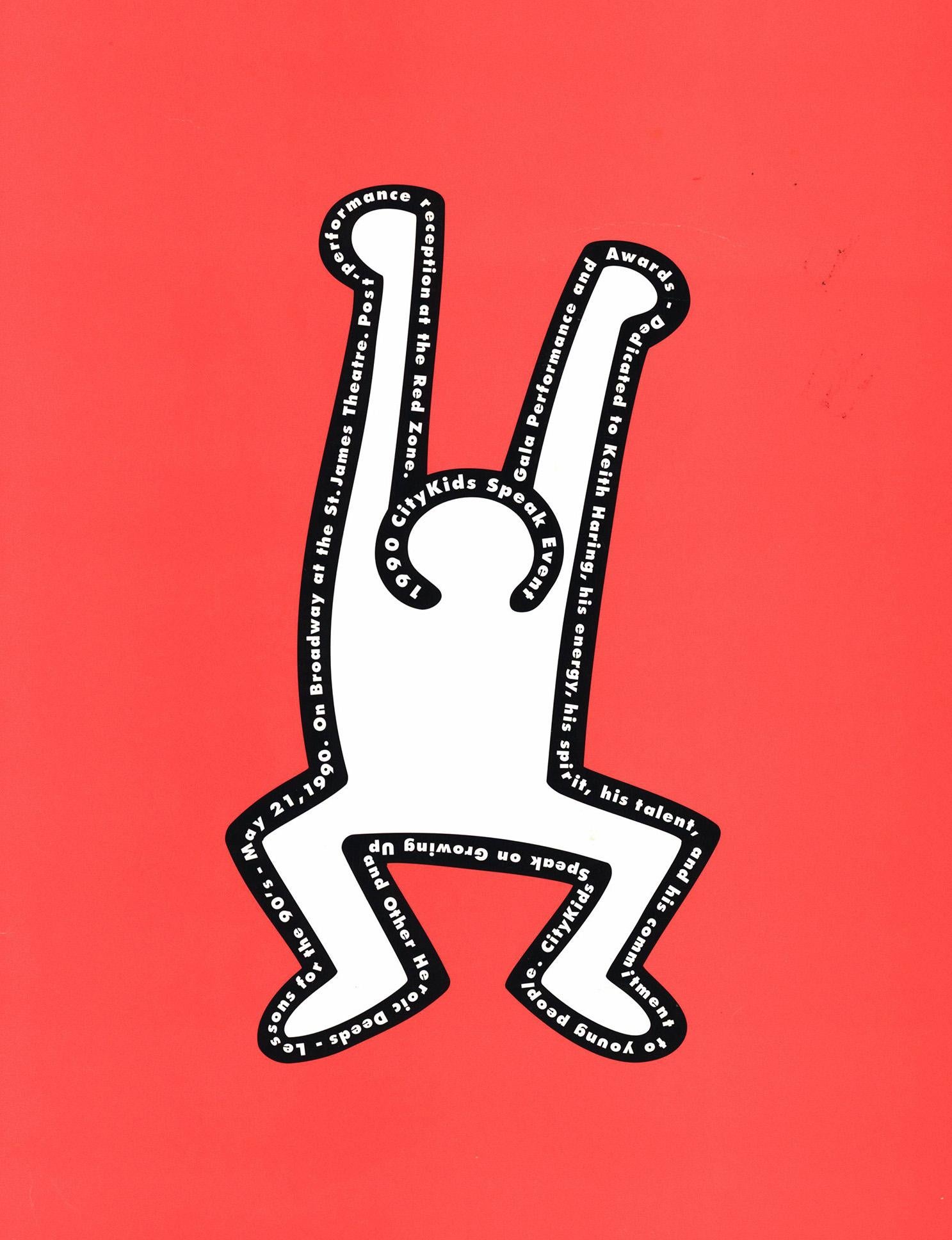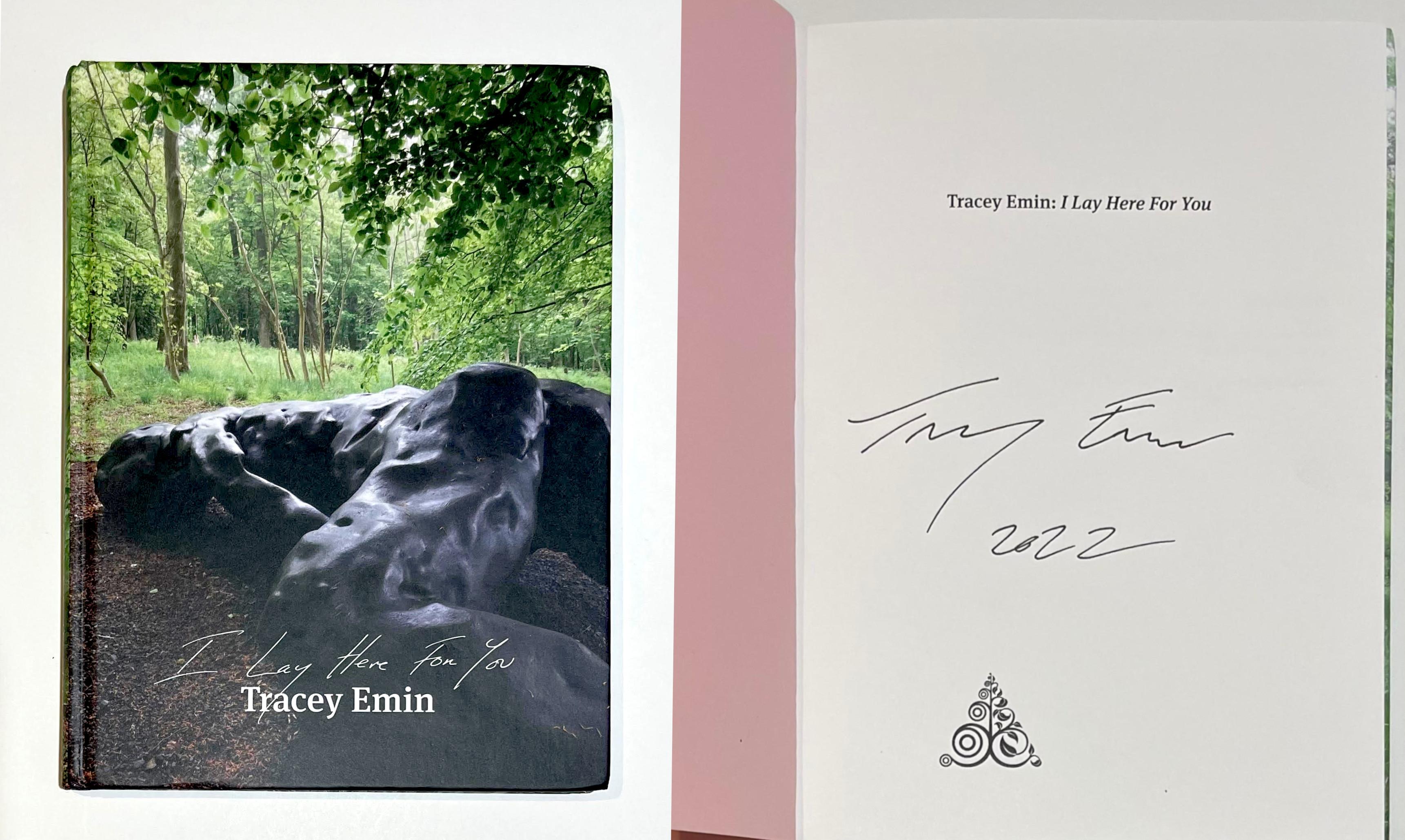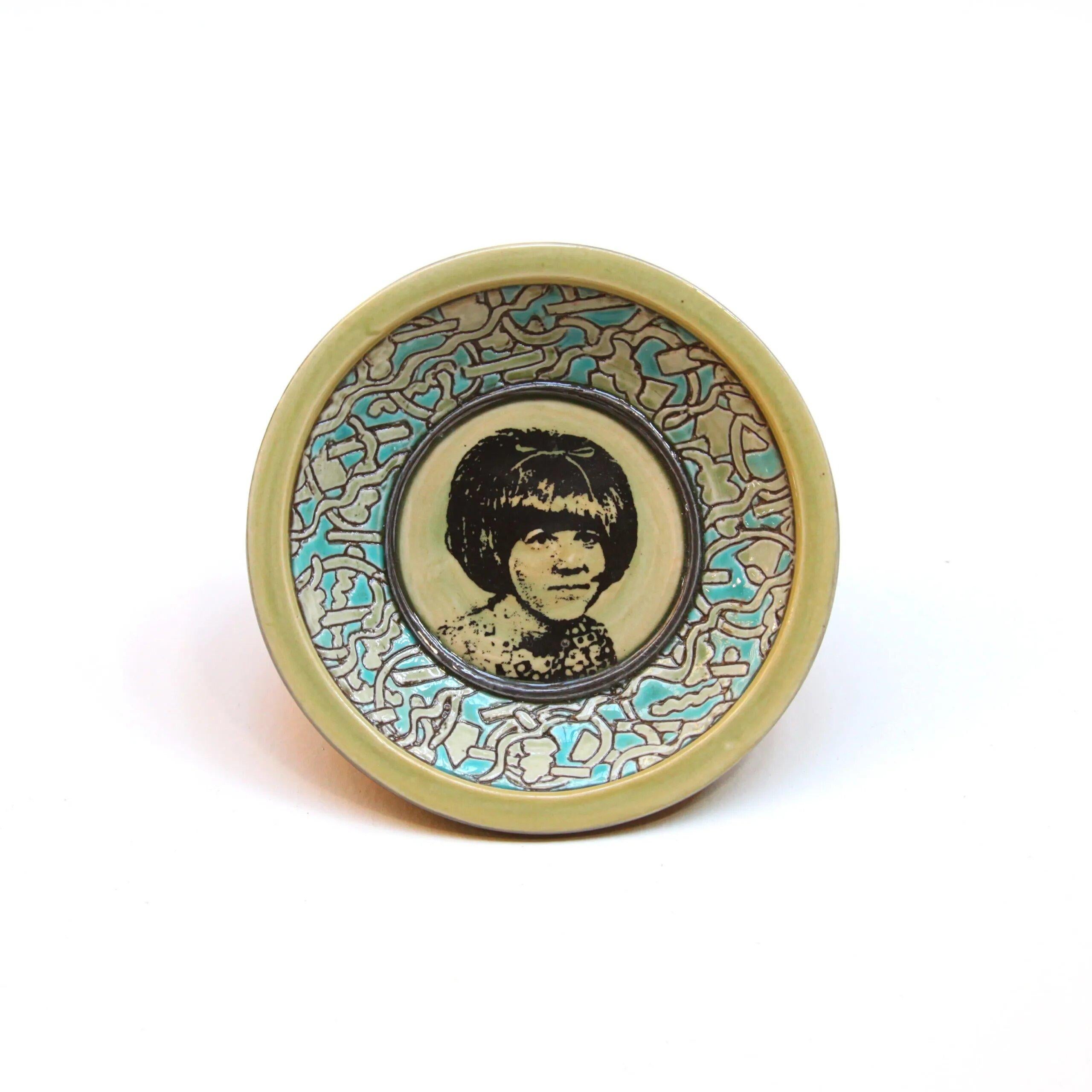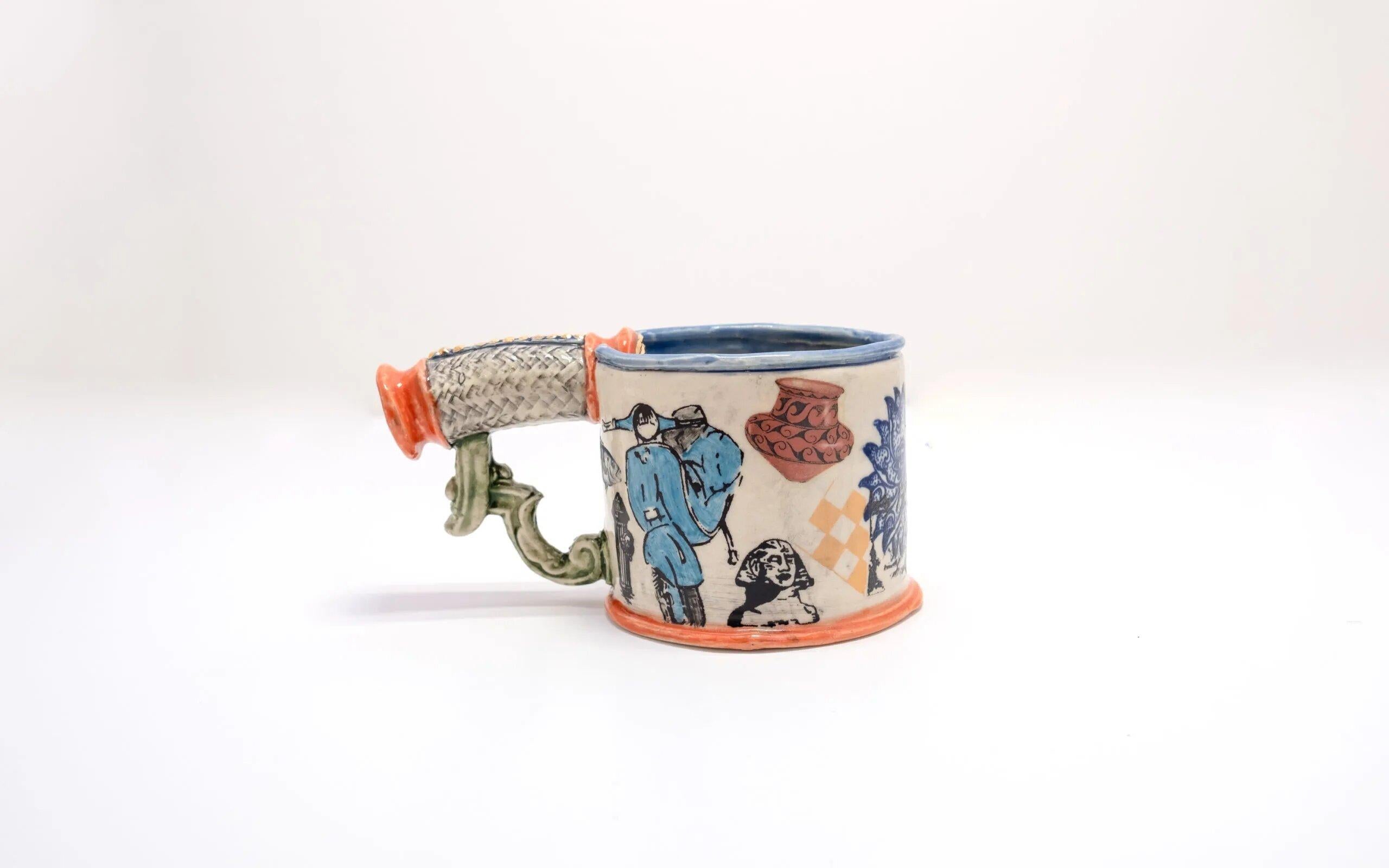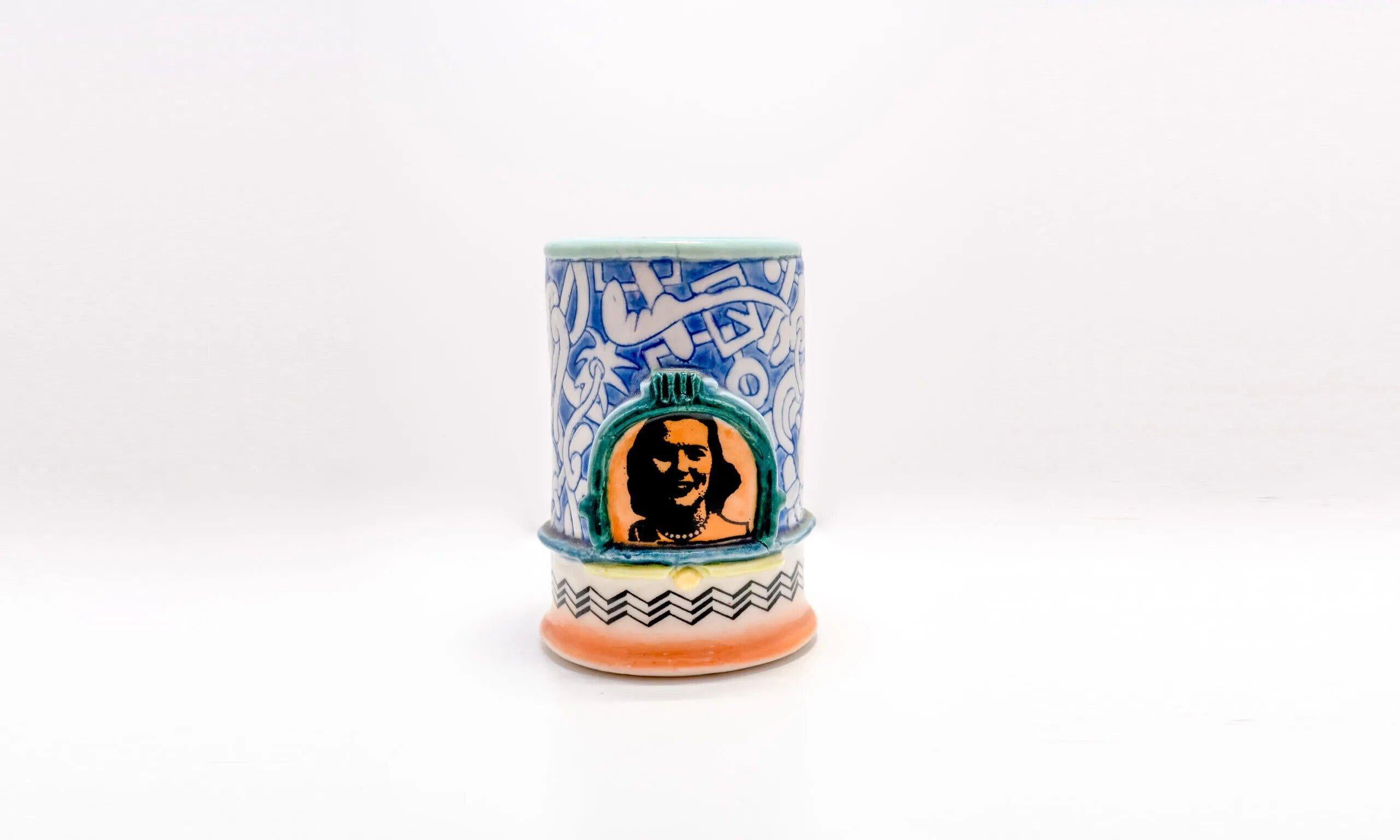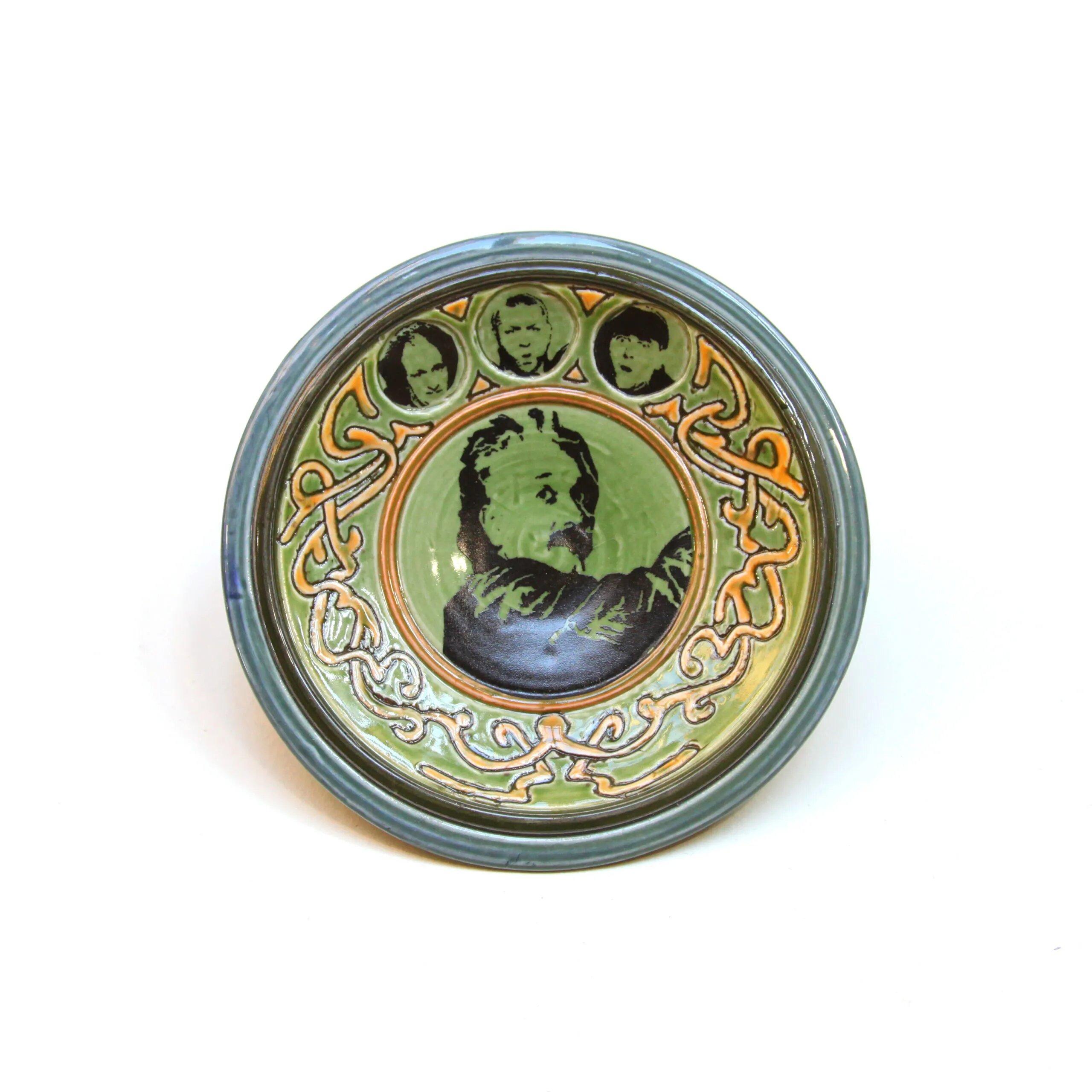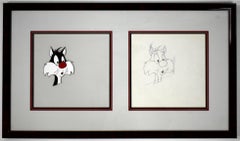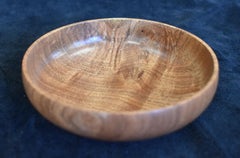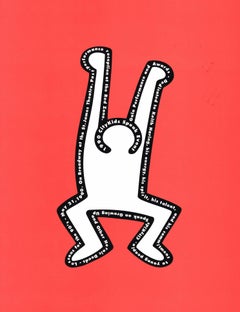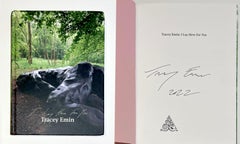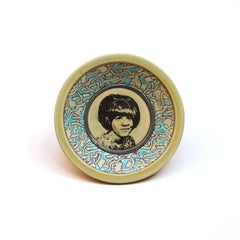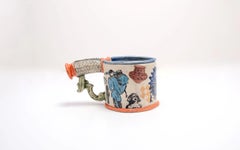Items Similar to "Daffy Duck" Animation Celluloid Looney Tunes
Want more images or videos?
Request additional images or videos from the seller
1 of 3
Chuck Jones"Daffy Duck" Animation Celluloid Looney Tunes1979
1979
About the Item
Animation Celluloid
Image Size: 7.5 x 9.5
Frame Size: 13 x 15
Medium: Celluloid
"Daffy Duck"
Signed by Chuck Jones
- Creator:Chuck Jones (1912 - 2002)
- Creation Year:1979
- Dimensions:Height: 13 in (33.02 cm)Width: 15 in (38.1 cm)Depth: 2 in (5.08 cm)
- Movement & Style:
- Period:
- Condition:Please visit my 1stdibs storefront for additional goodies. Mostly Texas but other artists and subjects as well.
- Gallery Location:San Antonio, TX
- Reference Number:1stDibs: LU76936568102
About the Seller
5.0
Vetted Professional Seller
Every seller passes strict standards for authenticity and reliability
Established in 1974
1stDibs seller since 2017
93 sales on 1stDibs
Typical response time: 2 hours
- ShippingRetrieving quote...Shipping from: San Antonio, TX
- Return Policy
Authenticity Guarantee
In the unlikely event there’s an issue with an item’s authenticity, contact us within 1 year for a full refund. DetailsMoney-Back Guarantee
If your item is not as described, is damaged in transit, or does not arrive, contact us within 7 days for a full refund. Details24-Hour Cancellation
You have a 24-hour grace period in which to reconsider your purchase, with no questions asked.Vetted Professional Sellers
Our world-class sellers must adhere to strict standards for service and quality, maintaining the integrity of our listings.Price-Match Guarantee
If you find that a seller listed the same item for a lower price elsewhere, we’ll match it.Trusted Global Delivery
Our best-in-class carrier network provides specialized shipping options worldwide, including custom delivery.More From This Seller
View All"Bugs Bunny in Bow Tie" Animation Celluloid Looney Tunes
Located in San Antonio, TX
Animation Celluloid
Image Size: 7.5 x 9.5
Frame Size: 13 x 15
Medium: Celluloid
"Bugs in Bow Tie"
Signed by Chuck Jones
Category
Late 20th Century Pop Art More Art
Materials
Color
"Sylvester" Animation Celluloid and Drawing Looney Tunes
Located in San Antonio, TX
Animation Celluloid
Image Size: 9 x 9
Frame Size: 16.5 x 28.5
Medium: Celluloid
"Sylvester"
This piece is an original drawing and a celluloid. Each piece is 9 inches by 9 inches.
Category
Late 20th Century Pop Art More Art
Materials
Color
"MESQUITE SHALLOW BOWL"
By Carmie
Located in San Antonio, TX
Carmie
Born 1958
Mesquite Shallow Bowl
5" diameter
1.5" tall
Biography
Carmie Born 1958
Wood Turner Carmie K. Acosta was born and raised in San Antonio. By day he works as a syntheti...
Category
21st Century and Contemporary Modern More Art
Materials
Wood
"Huge Oxblood Vase" Beautiful from Texas Master Glazer Harding Black
By Harding Black
Located in San Antonio, TX
Harding Black
San Antonio (1912 - 2004)
Huge Heavy Oxblood Vase 1984
Height 17''
At widest 5''
Biography
Harding Black San Antonio (1912 - 2004)
Harding Black was born on a farm in Nueces County between Ingleside and Aransas Pass and moved with his family to San Antonio in 1916. There he graduated from Brackenridge High School and attended San Antonio Junior College (1929-30). In 1931 Black joined an archaeological expedition to the Big Bend area sponsored by the Witte Memorial Museum. Initially a painter, he was taught by Rudolph Staffel in 1933 to make wheel- thrown pottery and in the same year began to teach children's ceramic classes at the Witte.
Between 1937 and 1939, Black directed ceramic installation in a San Antonio reconstruction project sponsored by the National Youth Administration and the Works Progress Administration art program. In 1955 he retired from teaching and devoted his time to ceramics. Black became a well-known ceramist from his research, innovations, and writings in the field.
Exhibitions: San Antonio Local Artists Annual Exhibition (1939-42, 1945, 1947); Texas General Exhibition (1940 award, 1942, 1948 honorable mention); National Ceramic Annual Exhibition, Syracuse Museum of Art (1947-54); River Art Group, San Antonio (1948-49); National Collection of Fine Arts, Washington D.C. (1951, 1956); Dallas Museum of Fine Arts (1952 one-man); Martin Museum of Art, Baylor University (1991 one-man); San Antonio Museum of Art (1995 retrospective); National Museum of Art, Washington, D.C. (1995); University of Texas at Dallas, Irving (1998 retrospective). Collections: Dallas Museum of Art; Museum of Fine Arts, Houston; San Angelo Museum of Fine Arts; San Antonio Museum of Art; Martin Museum of Art, Baylor University, Waco; National Museum of American Art, Washington D.C.; New Orleans Museum of Art; Everson Museum of Art, Syracuse, new York; Alfred University (New York).
Harding Black resided in San Antonio Texas where he worked as a potter for over 60 years and far as anyone knows he was completely self taught. I find it amazing that anyone could ever accomplish what he did with with no formal training in either ceramics or chemistry. It was a long and prolific journey from the early hand built earthenware pottery to become recognized as a master of glazes. While I feel that his forms often could be better this is more than compensated for by the spectacular glazes he developed. Constant experimentation and his acquired knowledge of chemistry were the foundations for the wonderful glazes that adorn his pottery.
The following quote is from an interview with Rudolf Staffel His copper reds are unbelievably beautiful. Harding was a master of glazes and one of the most generous human beings in the ceramic field that I've known. He had literally a room full of beautifully organized test tiles of all his glazes, and he would just throw the room open to anybody who wanted to rummage through his tiles. All the recipes were there and he shared them with anyone who was interested. It was wonderful to go and visit him. Although accurate records of all test firings were kept for reference it I have been told that it would be difficult to reproduce many of these glazes because of the kiln he built and clays he used. This may not be the case because in a recent phone conversation (4/11/2007) with Peter Pinnell he told me that some of his students had success replicating some glazes using Harding's formulas By concentrating on the bowl and vessel forms Harding remained true to the historical traditions of pottery making.
The magnificent Harding Black journey began in 1932. At that time he joined the Witte Museum Archaeological Society which provided him with access to their collections of Native American pottery. Harding became fascinated by these pollychromed vessels and he began attempting to create hand built pots. He had very little or no success but a life long of working in clay had begun. It was about this time that he met up with Rudolf Staffel and it was from him that Harding learned wheel throwing and developed ideas of how to operate a studio. Harding was given access to working space at the Witte where he built a wheel and in 1933 he was given a position as ceramic instructor. In this position it was his responsibility to establish a ceramics department. The first kiln Harding built was using plans that were obtained from Newcomb College. He scrounged parts from a junkyard which were used in its construction. This project was not totally successful because of problems reaching required temperatures. As usual this did not deter Harding. He seemed to have a wonderful ability to learn from failure and move on.
In the early 1940's Harding began working with formulas for copper red glazes prepared by Arthur Baggs and Edgar Littlefield. This work only added to his interest in Oriental pottery and fostered a desire to rework many old glazes. Being greatly influenced by A Potters Book published in 1940 by Bernard Leach Harding was now on his way seeking to incorporate form, function and surface treatment into a single entity where the whole is greater than the sum of the parts.
In the 1950's Harding left the Witte and built his own studio where he spent the rest of his life creating his wonderful art. The body of his work is a living tribute to the Harding Black lifelong love of ceramics. Along with being a researcher he was also a teacher always willing to share his knowledge with others. He spent his life producing pots and occasionally taking time off to do a bit if fishing. According to Harding Black - Harding Black 11/14/90 "I am one of the lucky ones. When I get up in the morning I can hardly wait to get to work." 1912 Born April 15 near Aransas Pass, Texas 1916 Family moved to San Antonio 1929 Graduated from Breckenridge High School 1929-30 Attended San Antonio Junior College 1931 Joined Archaeological Society of the Witte Museum, San Antonio, and participated in excavations of ancient Basket maker Indian mounds and caves in the Big Bend area of Texas 1933 Taught by Rudolf Staffel to make wheel-thrown pottery. Set tip studio in a streetcar behind Witte Museum and began teaching children’s ceramic classes 1937-39 Appointed Superintendent of Ceramic Installation for N Y A /W P A reconstruction project in San Antonio 1943 Moved from streetcar studio to new facilities in the reconstructed Ruiz House on the grounds of the Witte Museum Began firing to stoneware temperatures 1947-54 Exhibited each year in the annual National Ceramic Exhibition, Syracuse Museum of Art 1951 Exhibited at the National Museum of Art, Washington, DC 1952 Toured ceramic centers throughout the United States 1953 “Opening the Door to Copper-Reds” by Harding Black, published in January issue of Ceramics Monthly “Harding Black Profile” published in February issue of Ceramics Monthly 1954 “Iron Spotted Glazes” by Harding Black, published in February issue of Ceramics Monthly 1955 Built present studio at 8212 Broadway, San Antonio Retired from teaching at the Witte Museum 1956 Exhibited at the National Museum of Art, Washington, DC 1961 “Lava Glazes” by Harding Black, published in October issue of Ceramics Monthly 1964 “Harding Black Texas Potter” by Jean R Lange, published in November issue of Ceramics Monthly 1971 The Meyer Family Master Potters of Texas, co-authored by Harding Black and Georgeanna H Greet 1980 Harding Black’s biographical information entered into the archives of the Smithsonian Institution, Washington, D C 1983 Harding Black traveled throughout China 1984 Awarded Glaze Research Grant by Southwest Craft Center, San Antonio 1985 Solo exhibition at the Southwest Crafts Center 1987 Selected as Artist of the Year by the San Antonio Art League 1988 Incarnate Word College, San Antonio, establishes Harding Black Fund to aid ceramics students 1990 “Harding Black Pottery...
Category
1980s Modern More Art
Materials
Ceramic
Large Sgraffito Planters Mid Century Modern
Located in San Antonio, TX
These are most likely made by Harding Black of one of his fellow local San Antonio Texas potters. They are unsigned but the shape is Harding Black. Regardless they are pretty fantastic Sgraffito...
Category
1960s Contemporary More Art
Materials
Ceramic
Mesquite hollow form bowl. Natural Art Wood Turning
By Carmie
Located in San Antonio, TX
Carmie (1959-) Mesquite Hollow Form Height 2.5'' Diameter 7.5''
Bio
Carmie (1959-)
Wood Turner Carmie K. Acosta was born and raised in San Antonio. By day he works as a synthetic organic chemist specializing in steroid synthesis. His foray into wood turning began in the year 2000 when his father passed away. Growing up, he was surrounded by wood working and the associated wood working tools...
Category
2010s Modern More Art
Materials
Wood
You May Also Like
Keith Haring Citykids program 1990
By (after) Keith Haring
Located in NEW YORK, NY
Keith Haring CityKids Speak Program, New York 1990:
Trifolded program for a Keith Haring memorial event at the St. James theater in New York - hosted by CityKids, shortly after Hari...
Category
1990s Pop Art Prints and Multiples
Materials
Paper, Offset
Tracey Emin: I Lay Here For You (Hand signed and dated fine art monograph)
By Tracey Emin
Located in New York, NY
Tracey Emin: I Lay Here For You (Hand signed and dated book), 2022
Hardback monograph (hand signed and dated by Tracey Emin) on Munken Lynx Smooth Natural White 170 gsm with endpapers of Colorplan Candy Pink 135 gsm; matt laminate printed cover with black head and tail bands
Hand signed and dated by Tracey Emin on the title page.
9 × 6 3/4 × 2/5 inches
Unframed
Hardback monograph with illustrated boards and no dust jacket as issued, hand signed by Tracey Emin.
A beautifully designed publication I Lay Here For You, sumptuously illustrated and with a fascinating essay by Katy Hessell, author of The History of Art without Men.
About the project:
Tracey Emin’s first Scottish show since 2008, I Lay Here For You (28 May – 2 October) will offer an intimate encounter with love and hope set against the domestic architecture and informal woodland of Jupiter Artland. Imbued with connotations of both warmth and vulnerability, resonating with Tracey Emin’s belief of the ‘personal as political’ the exhibition will feature brand new work by the artist reflecting on the possibility of love after hardship.
Tracey Emin’s participation in Jupiter Artland’s 2022 season begins with the unveiling I Lay Here For You, a six metre bronze sited personally by the artist in an old-growth beech grove. Larger than life, powerful and at ease, the sculpture presents a radically different view of woman’s place...
Category
2010s Pop Art Figurative Prints
Materials
Ink, Mixed Media, Offset
Ceramic Blue and Green Portrait Plate
Located in San Diego, CA
This is a one of a kind original plate made by southern California artist, Ron Carlson. Its dimensions are 4.5 x 4.5 x 1 in (L x H x D). A certificate of authenticity will follow del...
Category
2010s Pop Art More Art
Materials
Ceramic
Ceramic Avant-Garde Sword Cup
Located in San Diego, CA
This is a one of a kind original cup made by southern California artist, Ron Carlson. Its dimensions are 5 x 2.5 x 2.5 in (L x H x D). A certificate of authenticity will follow deliv...
Category
2010s Pop Art More Art
Materials
Ceramic
Ceramic Avant-Garde Portrait Cup
Located in San Diego, CA
This is a one of a kind original cup made by southern California artist, Ron Carlson. Its dimensions are 4 x 4 x 3 in (L x H x D). A certificate of authenticity will follow delivery.
Lead free; hand washing highly recommended. Safe for microwave use...
Category
2010s Pop Art More Art
Materials
Ceramic
Ceramic Hanging Einstein Portrait Plate
Located in San Diego, CA
This is a one of a kind original plate made by southern California artist, Ron Carlson. Its dimensions are 5.75 x 5.75 x 1.5 in (L x H x D). A certificate of authenticity will follow...
Category
2010s Pop Art More Art
Materials
Ceramic
Recently Viewed
View AllMore Ways To Browse
Vintage Duck
Signed Chuck
Signed Duck Art Prints
Signed Cat
Abstract Action Art
Paintings Of Celebrities
Photographs of Children
Large Vintage Framed Print
California Still Life Painting
Moving Sculptures
Dark Blue Abstract Art
Contemporary British Photography
Dior Stamp
The Cowboy
French Paintings 1920
Groups Of Women Paintings
Painted Box Abstract
Painting Sisters
